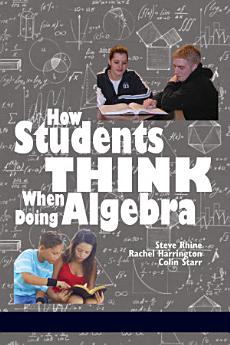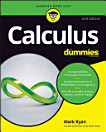How Students Think When Doing Algebra
Steve Rhine · Rachel Harrington · Colin Starr
2018 നവം · IAP
5.0star
2 അവലോകനങ്ങൾreport
ഇ-ബുക്ക്
351
പേജുകൾ
family_home
യോഗ്യതയുണ്ട്
info
reportറേറ്റിംഗുകളും റിവ്യൂകളും പരിശോധിച്ചുറപ്പിച്ചതല്ല കൂടുതലറിയുക
ഈ ഇ-ബുക്കിനെക്കുറിച്ച്
Algebra is the gateway to college and careers, yet it functions as the eye of the needle because of low pass rates for the middle school/high school course and students’ struggles to understand. We have forty years of research that discusses the ways students think and their cognitive challenges as they engage with algebra. This book is a response to the National Council of Teachers of Mathematics’ (NCTM) call to better link research and practice by capturing what we have learned about students’ algebraic thinking in a way that is usable by teachers as they prepare lessons or reflect on their experiences in the classroom. Through a Fund for the Improvement of Post-Secondary Education (FIPSE) grant, 17 teachers and mathematics educators read through the past 40 years of research on students’ algebraic thinking to capture what might be useful information for teachers to know—over 1000 articles altogether. The resulting five domains addressed in the book (Variables & Expressions, Algebraic Relations, Analysis of Change, Patterns & Functions, and Modeling & Word Problems) are closely tied to CCSS topics. Over time, veteran math teachers develop extensive knowledge of how students engage with algebraic concepts—their misconceptions, ways of thinking, and when and how they are challenged to understand—and use that knowledge to anticipate students’ struggles with particular lessons and plan accordingly. Veteran teachers learn to evaluate whether an incorrect response is a simple error or the symptom of a faulty or naïve understanding of a concept. Novice teachers, on the other hand, lack the experience to anticipate important moments in the learning of their students. They often struggle to make sense of what students say in the classroom and determine whether the response is useful or can further discussion (Leatham, Stockero, Peterson, & Van Zoest 2011; Peterson & Leatham, 2009). The purpose of this book is to accelerate early career teachers’ “experience” with how students think when doing algebra in middle or high school as well as to supplement veteran teachers’ knowledge of content and students. The research that this book is based upon can provide teachers with insight into the nature of a student’s struggles with particular algebraic ideas—to help teachers identify patterns that imply underlying thinking. Our book, How Students Think When Doing Algebra, is not intended to be a “how to” book for teachers. Instead, it is intended to orient new teachers to the ways students think and be a book that teachers at all points in their career continually pull of the shelf when they wonder, “how might my students struggle with this algebraic concept I am about to teach?” The primary audience for this book is early career mathematics teachers who don’t have extensive experience working with students engaged in mathematics. However, the book can also be useful to veteran teachers to supplement their knowledge and is an ideal resource for mathematics educators who are preparing preservice teachers.
റേറ്റിംഗുകളും റിവ്യൂകളും
5.0
2 റിവ്യൂകൾ
ഈ ഇ-ബുക്ക് റേറ്റ് ചെയ്യുക
നിങ്ങളുടെ അഭിപ്രായം ഞങ്ങളെ അറിയിക്കുക.
വായനാ വിവരങ്ങൾ
സ്മാർട്ട്ഫോണുകളും ടാബ്ലെറ്റുകളും
Android, iPad/iPhone എന്നിവയ്ക്കായി Google Play ബുക്സ് ആപ്പ് ഇൻസ്റ്റാൾ ചെയ്യുക. ഇത് നിങ്ങളുടെ അക്കൗണ്ടുമായി സ്വയമേവ സമന്വയിപ്പിക്കപ്പെടുകയും, എവിടെ ആയിരുന്നാലും ഓൺലൈനിൽ അല്ലെങ്കിൽ ഓഫ്ലൈനിൽ വായിക്കാൻ നിങ്ങളെ അനുവദിക്കുകയും ചെയ്യുന്നു.
ലാപ്ടോപ്പുകളും കമ്പ്യൂട്ടറുകളും
Google Play-യിൽ നിന്ന് വാങ്ങിയിട്ടുള്ള ഓഡിയോ ബുക്കുകൾ കമ്പ്യൂട്ടറിന്റെ വെബ് ബ്രൗസർ ഉപയോഗിച്ചുകൊണ്ട് വായിക്കാവുന്നതാണ്.
ഇ-റീഡറുകളും മറ്റ് ഉപകരണങ്ങളും
Kobo ഇ-റീഡറുകൾ പോലുള്ള ഇ-ഇങ്ക് ഉപകരണങ്ങളിൽ വായിക്കാൻ ഒരു ഫയൽ ഡൗൺലോഡ് ചെയ്ത് അത് നിങ്ങളുടെ ഉപകരണത്തിലേക്ക് കൈമാറേണ്ടതുണ്ട്. പിന്തുണയുള്ള ഇ-റീഡറുകളിലേക്ക് ഫയലുകൾ കൈമാറാൻ, സഹായ കേന്ദ്രത്തിലുള്ള വിശദമായ നിർദ്ദേശങ്ങൾ ഫോളോ ചെയ്യുക.




